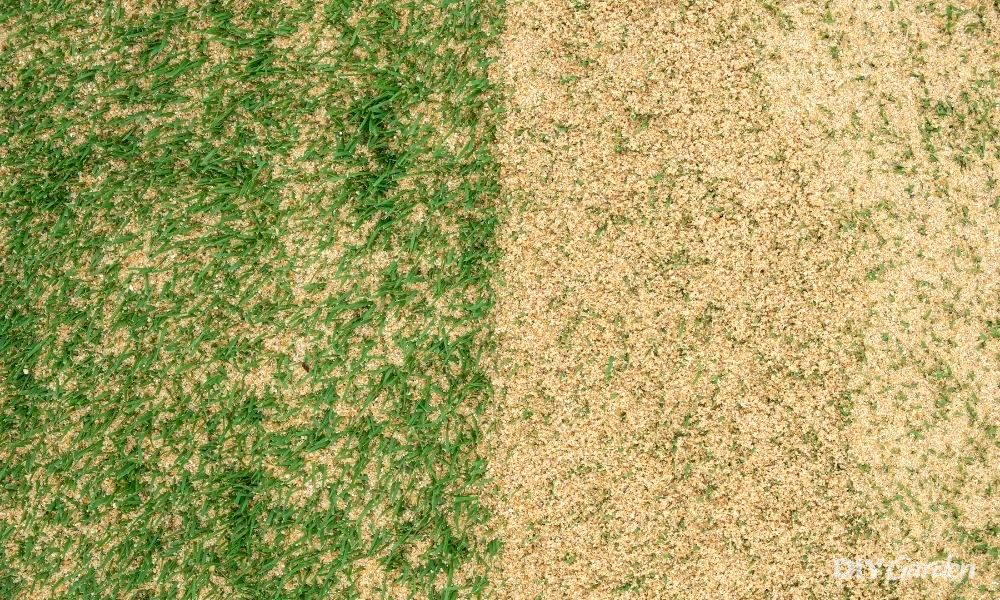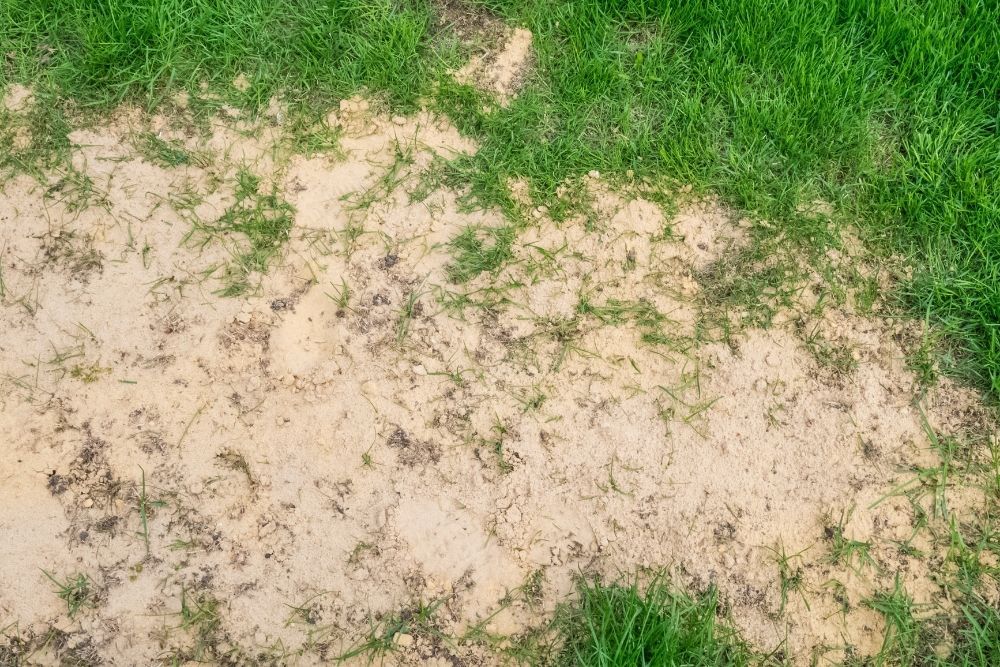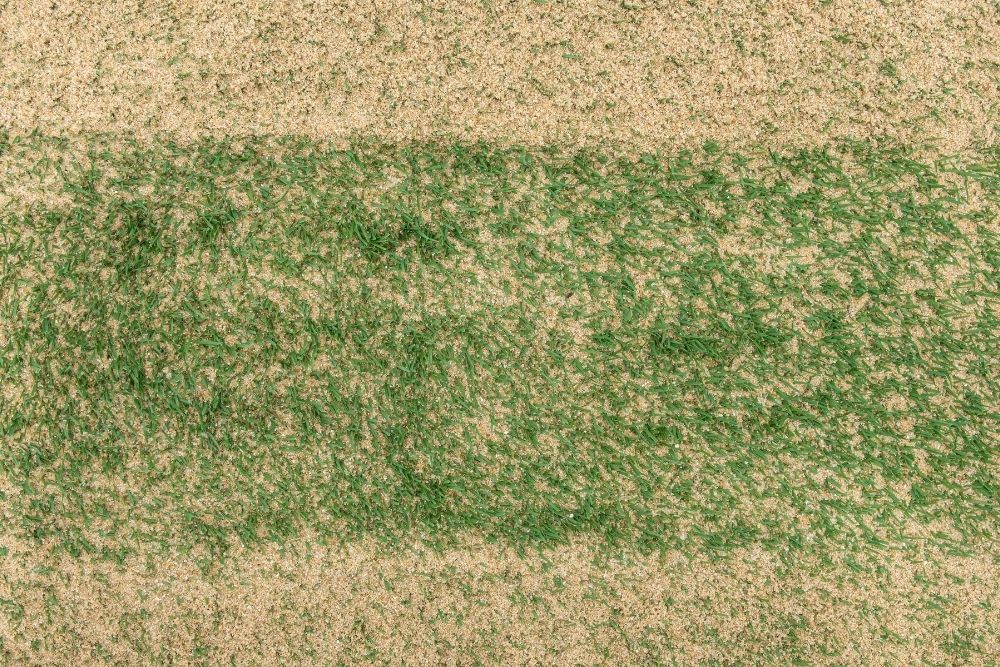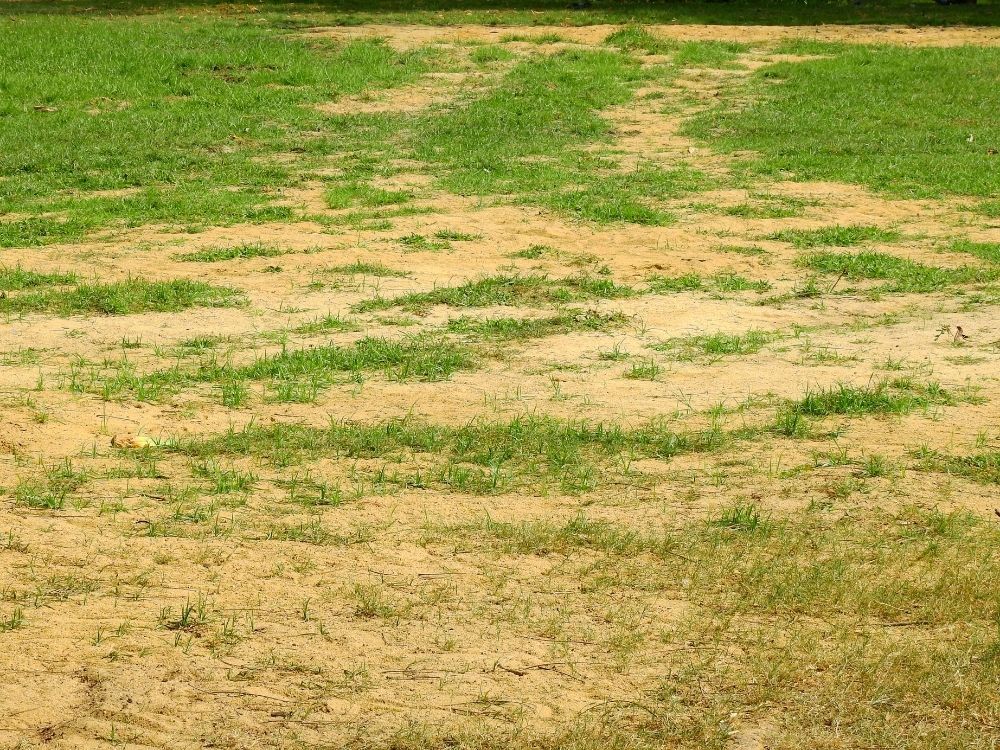
Applying lawn sand as a treatment for the grass used to be a highly popular fix for all kinds of lawn issues. However, over time, it was replaced by more specific treatments, like moss killers, weed killers and seasonal fertilisers.
However, lawn sand is making a comeback and it’s growing in popularity once more. Why? Because it’s versatile, natural and all-round easy to use. It can be used as a fertiliser, weed killer and moss preventer, amongst other things.
If you’ve never heard of lawn sand as a lawn care product, here’s everything you need to know about what it is and how to apply it.
What is Lawn Sand?
Lawn sand is a traditional treatment and fertiliser for grass. It’s made from two main ingredients – sand and iron sulphate.
The sand doesn’t do very much for your grass, it’s mostly there to help you get an even spread. But the iron sulphate has a huge impact on the lawn. As well as fertilising your grass, lawn sand can help prevent moss (and remove it), kill weeds and – best of all – give your grass a fuller, greener look. This is helped by its nitrogen content as well, something often found in lawn fertilisers. Therefore, lawn sand is certainly worth considering if your lawn has been looking a little yellow recently.
What Does Lawn Sand Do?
Lawn sand is a versatile treatment that can help manage several issues all at once, whilst also improving the overall health of your lawn.
When you spread lawn sand over your grass and water it, the nutrients seep out and run directly into your soil. The sand also sticks to any weeds or moss and slowly scorches them. A lot of chemical moss killers contain iron sulphate (one of lawn sand’s main ingredients) so it’s proven to be pretty effective against moss.
Getting rid of weeds and moss can help the lawn drain better and improve how easily grass can access nutrients. Lawn sand also helps with general drainage if the lawn has heavy, clay soil. These are just a couple of things that can make grass greener.
Is Lawn Sand Harmful To Pets?
While pet-friendly lawn sand is not harmful to pets, keep them off the lawn after you’ve just applied it, and don’t let them back on until after it has rained and the grass is dry again.
If you have animals that graze on your grass, like rabbits and guinea pigs, keep them off the treated section of lawn for at least a month or as per the instructions.
When is the Best Time To Use Lawn Sand?
Since lawn sand is a great all-rounder, you can use it even when your grass doesn’t have any significant issues.
For best results, apply lawn sand to your grass in the following conditions:
- During spring – The spring growing season, when temperatures start to rise, is the best time to apply lawn sand. When applied at this time, lawn sand will yield the best results in preventing weeds, killing off moss and helping your grass grow.
- When the grass is dry – Applying lawn sand to wet grass will just make it clump and won’t lead to an even spread. You’ll see a much better result when you apply lawn sand to dry grass.
- Around 3 days after cutting – The sand works best when it’s applied at least 3 days after you’ve cut your grass.
- When it’s not windy – Lawn sand can easily scatter when it’s windy, leaving to concentrations of sand in certain areas of the garden. Not only can this cause grass to yellow, it can also stain and damage things like patios and garden furniture. To save yourself this hassle, don’t apply lawn sand when it’s windy.
- A year after laying new turf – If your grass is still less than a year old, don’t go straight in with the lawn sand. Give your new lawn time to settle first and wait until next spring before applying lawn sand.
5 Reasons Why You Should Use Lawn Sand
1. It Controls Moss
Moss on your lawn can have its benefits, and it’s good for the planet thanks to its carbon-storing abilities. But it isn’t always great for curb appeal and it can easily smother your lawn. If you don’t like having moss in your grass, lawn sand can help kill it off and prevent spreading.
If you’ve got a lot of moss to deal with, you might also want to consider scarifying the lawn. Check out our article on lawn scarifying if you want to learn about this process in more detail.
2. It Boosts Greenery
Having a lush, green lawn makes the garden an enjoyable place to spend time – and an area you can be proud of.
Since lawn sand is a type of fertiliser that’s high in nitrogen (which grass loves!), it can help boost the overall greenery of your lawn. It can also help promote new growth in patchy areas.
If you’ve got a lot of patchy grass in your garden, you might need to re-seed the lawn first. This will help fill in the gaps before using lawn sand.
3. It Kills Weeds
Just like lawn sand can kill off moss, it’s also a great extinguisher of unwanted weeds. By regularly applying sand to your lawn, you can help reduce and prevent weeds.
You may find it useful to alternate between different weed-combatting products like chemical weed killers and weeding tools. Lawn sand will provide another prong in the attack against weeds.
4. It Fertilises Soil
As mentioned, lawn sand has a high nitrogen content. When this is released, it acts as a great fertiliser for your grass and soil. It’s a well-known fact that fertilised grass grows quicker, greener and stronger, meaning your lawn is less likely to face any serious diseases.
5. It’s Cheap & Easy To Use!
Who doesn’t love lawn care that’s cheap, easy and does the job well?
One of the best things about lawn sand is that it couldn’t be easier to use. As long as you water your grass after applying it, or it rains within 48 hours of application, you can’t go wrong.
Plus, lawn sand is known for getting better coverage than liquid fertilisers. And it’s usually cheaper to buy. If you want to do some comparing, you can check out our review page on the best lawn feed products to see what else is on the market.
How To Apply Lawn Sand & Get Great Results
1. Cut the Grass
If it’s springtime and you haven’t mowed your lawn since before winter, make sure you cut it before you apply lawn sand. If you want more details about when to do this first cut, take a look at our lawn care monthly calendar.
Once you’ve cut the grass, leave it for at least 3 days before applying the sand.
2. Wait Until the Lawn is Dry
Wet grass makes lawn sand stick together, which can cause several problems. It can clog up your garden spreader, distribute unevenly and end up making a mess of the lawn! For the best results, apply lawn sand when the grass is dry.
3. Apply With a Spreader
The easiest way to apply lawn sand is to use a spreader. You can apply lawn sand by hand, but it will be more difficult to get an even spread.
Special lawn sand applicators come in small, medium and large sizes to help you achieve an even distribution. The bigger your lawn, the bigger your spreader needs to be.
4. Water the Grass
For it to settle into the soil, lawn sand needs water within the first 48 hours after application. If it’s not due to rain, get the sprinklers out and make sure your grass is well hydrated. If you don’t have a sprinkler system, you might want to check out our top recommended sprinklers – they can make lawn care a lot less time consuming.
Watering the grass after applying lawn sand is an important step that mustn’t be missed. Lawn sand can scorch your grass if it doesn’t have water in the first two days.
Make sure you keep your kids and pets off the lawn during this time. Even if you buy pet-friendly lawn sand, the chemicals will be the most prominent on your lawn after you’ve applied it and it’s wet. Check the instructions to see when it’s safe for them to walk, play or graze on your lawn.
5. Clear Away Any Residue
Lawn sand that gets onto your patio or garden furniture can easily stain it. Do a quick check before you finish for the day and clean up any residue with a dustpan and brush.
6. Don’t Mow
Once you’ve applied lawn sand, refrain from mowing for at least 3 days afterwards. This will help the sand settle deeply into the soil.
Also, keep an eye on what happens with any moss or weeds on your lawn over the next few weeks. If the sand has killed them off, lightly rake the grass to clean up the remnants and prevent re-growth.
Conclusion
If you find most lawn care treatments complicated, lawn sand is definitely one of the simpler solutions. While it may not fix wide-scale moss or weed issues, it can go a long way in keeping general problems at bay. If you’re looking for a lawn care regime that’s cheap, easy and does it all-in-one, give lawn sand a go!
For more lawn care advice, I recommend checking out the other articles on our Lawn Care Homepage – we’ve researched and written several posts covering many different aspects of lawn care.



